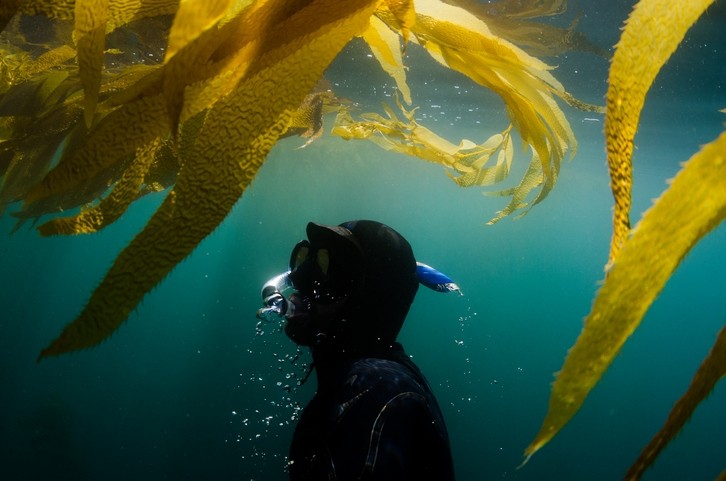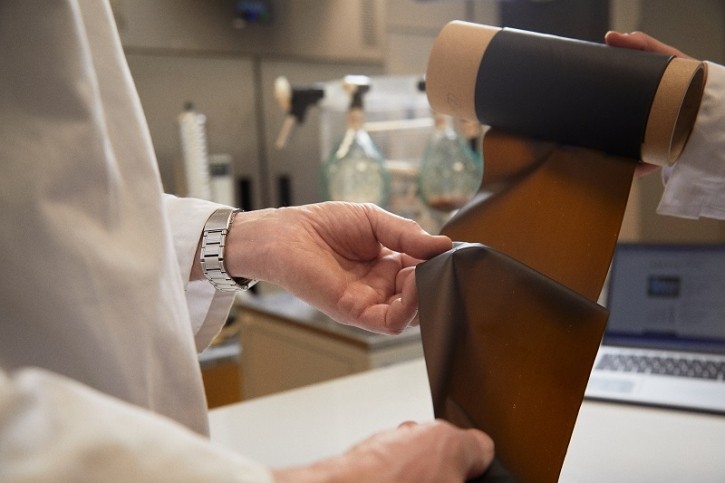Can the seaweed resurgence survive the bottlenecks?

Farmed seaweed boasts numerous environmental, social and economic benefits. It is easy and quick to grow – some marine algae can be ready to harvest in just six weeks, according to conservation charity WWF. It does not require fertiliser, pesticides, freshwater or land. Its health benefits include minerals, amino acids, and iodine.
It therefore offers an efficient way to produce nutritious food for a growing population. It is also used in both human and animal food, and can be found in a variety of medicine and beauty products, biofuels, and packaging.
Seaweed is also crucial in maintaining marine ecosystems as it provides habitat, improves water quality, and acts as a carbon sink, helping to mitigate the impacts of climate change. What’s more, seaweed farming is a vital source of income for coastal communities across the globe, providing livelihood opportunities for thousands in rural and coastal regions.
It is no wonder seaweed production has grown to over 35 million tonnes, according to the WWF, more than doubling in the last decade. Asia, where seaweed is a staple in many diets, leads the way with 98% of seaweed production coming from just six countries: China, Indonesia, South Korea, the Philippines, and North Korea.
Growth potential
There is therefore huge potential for the seaweed farming to grow in other regions. A recent report by the KELP-EU project, which is focused on expanding the seaweed industry in Europe, notes that worldwide, the seaweed industry has been on a steady growth trajectory for decades.
It points out that seaweeds have been harvested and used by humans for centuries. Before declining in the 20th century as synthetic alternatives were found it was used to make soda for glass manufacturing in 1700s France and Scotland, for example.
Since the 1950s, revealed KELP-EU, there has been 60x growth in volumes with all growth coming from farming while wild harvest volumes have broadly stayed steady. In fact, 97% of volumes have come from cultivation and farming: a fact that highlights the focus on scalability of farming.
There is also an opportunity to diversify seaweed farming and avoid monocultures, the KELP-EU project report noted. The total number of known species of macroalgae in Europe stands at around 1,550. But globally, only around five species make up the vast majority of cultivation. On the demand side, Europe remains a net importer and one of the biggest importers of seaweed products globally.
Questions remain
But there are challenges for this industry too. In Asia, seaweed farming industry faces several sustainability challenges, one of which is environmental degradation from rapid seaweed farm expansion. This leads to habitat destruction, biodiversity loss and nutrient run-off, which then harms marine ecosystems.
Additionally, improper farming techniques — such as excessive fertilisers and pesticide use — can cause water pollution, algal blooms and damage to nearby coral reefs, while climate change can lead to rising sea temperatures and ocean acidification that can adversely affect seaweed growth, reducing yields and affecting farmers' income.
Key questions also still remain on whether the potential of seaweed to mitigate climate change can be significantly increased on a global scale.

In Europe, meanwhile, the development of the seaweed aquaculture industry has been hindered by factors such as a complex licensing processes, a lack of cost-efficient technologies, missing industry infrastructures and an absence of value chain integration, as well as limited investment.
These challenges are being addressed, however, as the region’s seaweed industry enjoys something of a revival. According to the KELP-EU report, Europe leads in the number of startups, and also in the number of deals and the amount of money invested. The overall amount invested in European seaweed companies has grown by 24x between 2010 and 2020.
One start-up is Scotland-based Oceanium, the company behind the KELP-EU project. It sources seaweed from a network of seaweed farmers. Then, at its biorefining facility, turns the seaweed into ingredients and materials for use in a host of sectors including food and beverage; health and cosmetics; and packaging and textiles.
Seaweed’s resurgence is down to the fact that “the market is here, and the technology is here to get the best of this raw material,” Oceanium’s new managing director, Benjamin Armenjon, told AgTechNavigator. Before joining Oceanium, Armenjon was chief sales and development officer and general manager for nutrition and health at French insect-based ingredient producer Ÿnsect. He is now tasked with driving commercialisation of Oceanium’s ingredients and the scaling of its proprietary seaweed biorefinery.
"Today there is a demand for newer naturally resourced products; for sustainable ingredients; and for the health benefits algae can bring across the food chain, skin care and cosmetics,” he said.
Another a potential barrier to the industry scaling up, however, is a current lack of hatchery capacity. Hatcheries are needed to produce the spores to be planted at the seaweed patch. Advancement of hatchery services is improving thanks to initiatives such as SeaMark, noted the KELP-EU report, but it is still needed. “Advancement of hatchery services to enable selective breeding has significant potential to increase seaweed farming productivity and resilience, thereby securing profitability and competitiveness of the seaweed value chain,” it noted.
The KELP-EU report concluded there has been significant growth and interest in seaweed farming, with an increase in the role that farming plays in the industry alongside wild harvest, with it taking a much larger proportion of the seaweed than even 10 years ago. There are also multiple exciting companies that have come online to offer product solutions from nutraceuticals to biostimulants, which offer a variety of economic values. And while the number of species being cultivated remains relatively low at the moment, there are more native species that could be explored – the industry is “just scratching the surface”, it declared.
Lastly, it said: “There are key bottlenecks that require unlocking for the industry to be able to scale, including supporting the farming, hatchery and market application levels; the foundations are all there and significant progress has been made in building out a regional value chain that can create economic and environmental benefits for Europe. Ultimately, increasing biorefining capacity as shown in the KELP-EU project is the only way that European farmed seaweed will achieve its potential and realise the benefits that the whole value chain can bring.”
Armenjon agreed the foundations are there. All the bottlenecks will be solved he said if "we show that there is a market and a traction". He added: “The biorefinery has been developed to take into consideration the lifecycle assessment of the process. We know how to make things grow with a minimal impact. We are developing a whole new sector which will have a positive impact on the earth. I strongly believe that the oceans in general are the new source of sustainable growth.”










